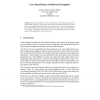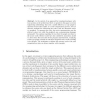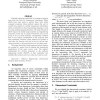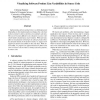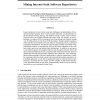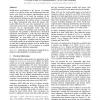WM
2003
14 years 6 months ago
2003
: We present a software tool for examplet reuse. We define examplets to be goal-directed snippets of source code, often written for tutorial purposes, that show how to use program...
DAGSTUHL
2006
14 years 6 months ago
2006
Abstract. In the context of an approach for reengineering legacy software systems at the architectural level, we present in this paper a reverse engineering methodology that uses a...
SETP
2007
14 years 6 months ago
2007
Scientific equations embedded in computer programs must obey the rules for dimensional consistency. Many efforts have been made to enforce these rules within computer programs. So...
SPLC
2008
14 years 6 months ago
2008
Implementing software product lines is a challenging task. Depending on the implementation technique the code that realizes a feature is often scattered across multiple code units...
NIPS
2007
14 years 6 months ago
2007
Large repositories of source code create new challenges and opportunities for statistical machine learning. Here we first develop Sourcerer, an infrastructure for the automated c...
APVIS
2008
14 years 6 months ago
2008
With the success of open source software projects, such as Apache and Mozilla, comes the opportunity to study the development process. In this paper, we present StarGate: a novel ...
APCCM
2008
14 years 6 months ago
2008
Model-driven development is the process of creating models of a software system and transforming them into source code. Since the stepwise transformations can be done automaticall...
USENIX
2007
14 years 7 months ago
2007
Most computer defense systems crash the process that they protect as part of their response to an attack. Although recent research explores the feasibility of selfhealing to autom...
WCRE
1995
IEEE
14 years 8 months ago
1995
IEEE
A legacy system is an operational, large-scale software system that is maintained beyond its first generation of programmers. It typically represents a massive economic investmen...
ICSE
1995
IEEE-ACM
14 years 8 months ago
1995
IEEE-ACM
Compilers and other programming environment tools derive information from the source code of programs; derived information includes compiled code, interprocedural summary informat...
